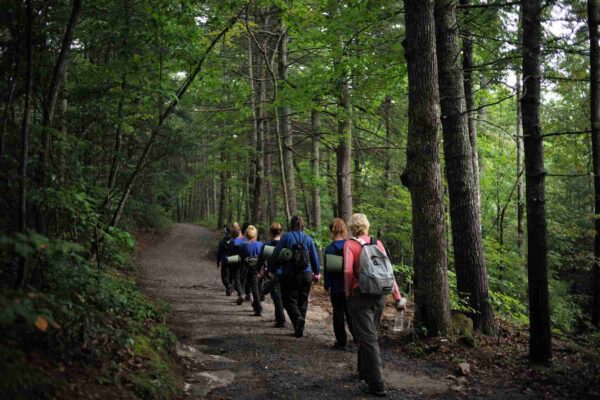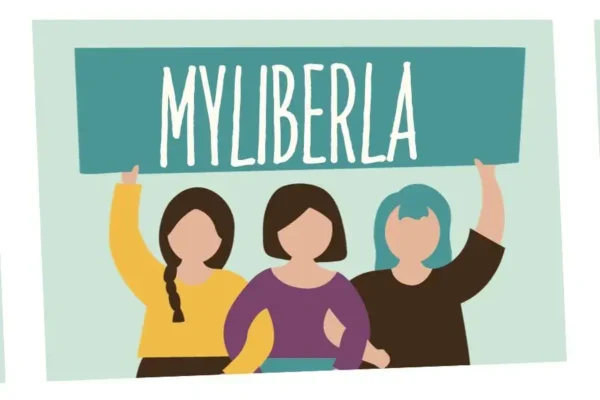Table of contents
Introduction:
In recent years, wilderness therapy programs have gained popularity as a transformative experience for troubled individuals seeking a path to self-discovery and healing. These programs, often set against the backdrop of nature’s beauty, promise personal growth and rehabilitation. However, a string of tragic incidents has cast a shadow over this industry. In this article, we will delve into the Trails Wilderness Program and the unsettling events that led to the death of participants, questioning the safety and efficacy of such programs.
The Allure of Wilderness Therapy Programs
Wilderness therapy programs have captivated the public with promises of a unique and challenging experience that fosters personal development. Participants are drawn to the idea of leaving behind the distractions of modern life and immersing themselves in nature, relying on primitive skills and teamwork to navigate challenges. These programs are often marketed as a remedy for a variety of issues, including addiction, behavioral problems, and mental health disorders.
Trails Wilderness Program Overview
Trails Wilderness Program, like many others, offered a structured environment in the great outdoors. Participants were led by experienced guides through a series of physically and emotionally demanding activities aimed at promoting self-reflection and growth. The program touted a high success rate, claiming to have helped numerous individuals overcome their struggles and emerge stronger.
The Tragic Incidents
Despite the promises of transformation and healing, Trails Wilderness Program faced a series of tragic incidents that raised questions about the safety protocols and supervision in place. Families who had entrusted their loved ones to the program were devastated when news broke about participants losing their lives during these excursions.
Lack of Proper Supervision
One common thread in these incidents was the apparent lack of adequate supervision. Critics argue that the wilderness environment, with its inherent risks, demands a higher level of oversight. The absence of experienced and well-trained staff during critical moments may have contributed to the unfortunate outcomes.
Medical Emergencies and Delayed Response
In some cases, participants faced medical emergencies in remote locations, far from immediate medical assistance. The delayed response time and the limited resources on hand raised concerns about the program’s preparedness to handle unforeseen circumstances. Critics argue that wilderness therapy programs must prioritize safety over the thrill of adventure.
Industry Regulation and Oversight
The wilderness therapy industry operates in a regulatory gray area, with minimal standardized guidelines governing these programs. As demand for such experiences grows, there is a pressing need for stricter regulations to ensure the safety and well-being of participants. Advocates argue for the establishment of comprehensive oversight to hold programs accountable for their practices.
The Need for Standards and Accreditation
To prevent future tragedies, experts emphasize the importance of implementing industry-wide standards and accreditation. A comprehensive set of guidelines could address issues such as staff qualifications, safety protocols, and emergency response plans. This would not only protect participants but also provide families with assurance when considering wilderness therapy options.
Transparency and Informed Consent
Ensuring transparency in the information provided to participants and their families is crucial. Informed consent should encompass a realistic assessment of the risks involved and the program’s ability to manage emergencies. Establishing a standard practice for disclosure can empower individuals to make informed decisions about their participation in wilderness therapy.
The Emotional Toll on Participants and Families
Beyond the physical dangers, the emotional toll on participants and their families cannot be overstated. The tragedy of losing a loved one during a program intended to bring about positive change adds an extra layer of complexity to the debate surrounding wilderness therapy. Healing and closure become elusive as families grapple with the dual challenges of grief and unanswered questions.
Alternatives and Ethical Considerations
As the safety of wilderness therapy programs comes under scrutiny, alternative approaches to therapeutic intervention gain prominence. Critics argue that traditional therapy settings, with their established safety protocols and ethical standards, may provide a more secure environment for individuals seeking help. Examining the ethics of subjecting vulnerable individuals to potentially hazardous situations becomes a critical aspect of this conversation.
Conclusion:
The Trails Wilderness Program tragedy sheds light on the dark side of an industry that promises transformation and healing. As the demand for wilderness therapy continues to grow, the need for rigorous oversight, standardized guidelines, and increased transparency becomes paramount. Families and individuals seeking therapeutic experiences must be armed with information to make informed decisions about their well-being. Only through a comprehensive reassessment of the industry can we hope to prevent further tragedies and provide genuine support for those in need. Cerdewasa
Frequently Asked Questions (FAQs)
What is the Trails Wilderness Program?
The Trails Wilderness Program is a therapeutic outdoor program designed to provide a transformative experience for individuals facing various challenges such as addiction, behavioral issues, and mental health disorders. Participants engage in activities in a natural setting to promote personal growth and self-discovery.
What led to the tragic incidents within the Trails Wilderness Program?
The tragic incidents within the Trails Wilderness Program are primarily attributed to factors such as inadequate supervision, delayed response to medical emergencies, and a lack of standardized safety protocols.
How many incidents have occurred within the Trails Wilderness Program?
The number of incidents varies, and specific details may be subject to ongoing investigations. Multiple cases have been reported where participants lost their lives during the program, prompting concerns about the safety of the program.
What safety measures were in place during the Trails Wilderness Program?
Critics argue that there were apparent deficiencies in safety measures, including inadequate supervision and delayed response to medical emergencies. The lack of standardized safety protocols has raised questions about the program’s preparedness to handle unforeseen circumstances.
Is there any regulation or oversight for wilderness therapy programs like Trails?
The wilderness therapy industry currently operates with minimal standardized guidelines. Advocates emphasize the need for industry-wide regulations, accreditation, and oversight to ensure the safety and well-being of participants.
What alternatives are available for individuals seeking therapeutic intervention?
Critics suggest exploring traditional therapy settings with established safety protocols and ethical standards as alternatives to wilderness therapy programs. This approach aims to provide a more secure environment for individuals seeking therapeutic help.
How can families make informed decisions about wilderness therapy programs?
Families are encouraged to seek transparency in the information provided by programs. This includes thorough disclosure of risks, safety protocols, and emergency response plans. Additionally, considering programs with established standards and accreditation can contribute to informed decision-making.
What emotional toll do these incidents have on participants and their families?
Beyond the physical dangers, the emotional toll on participants and their families is significant. Losing a loved one during a program intended for positive change adds complexity to the grieving process, making healing and closure challenging.
What steps can be taken to prevent further tragedies in wilderness therapy programs?
Experts stress the importance of comprehensive industry reassessment, including the establishment of standardized guidelines, increased transparency, and a focus on informed consent. Implementing these measures can contribute to preventing further tragedies and ensuring genuine support for those in need.



